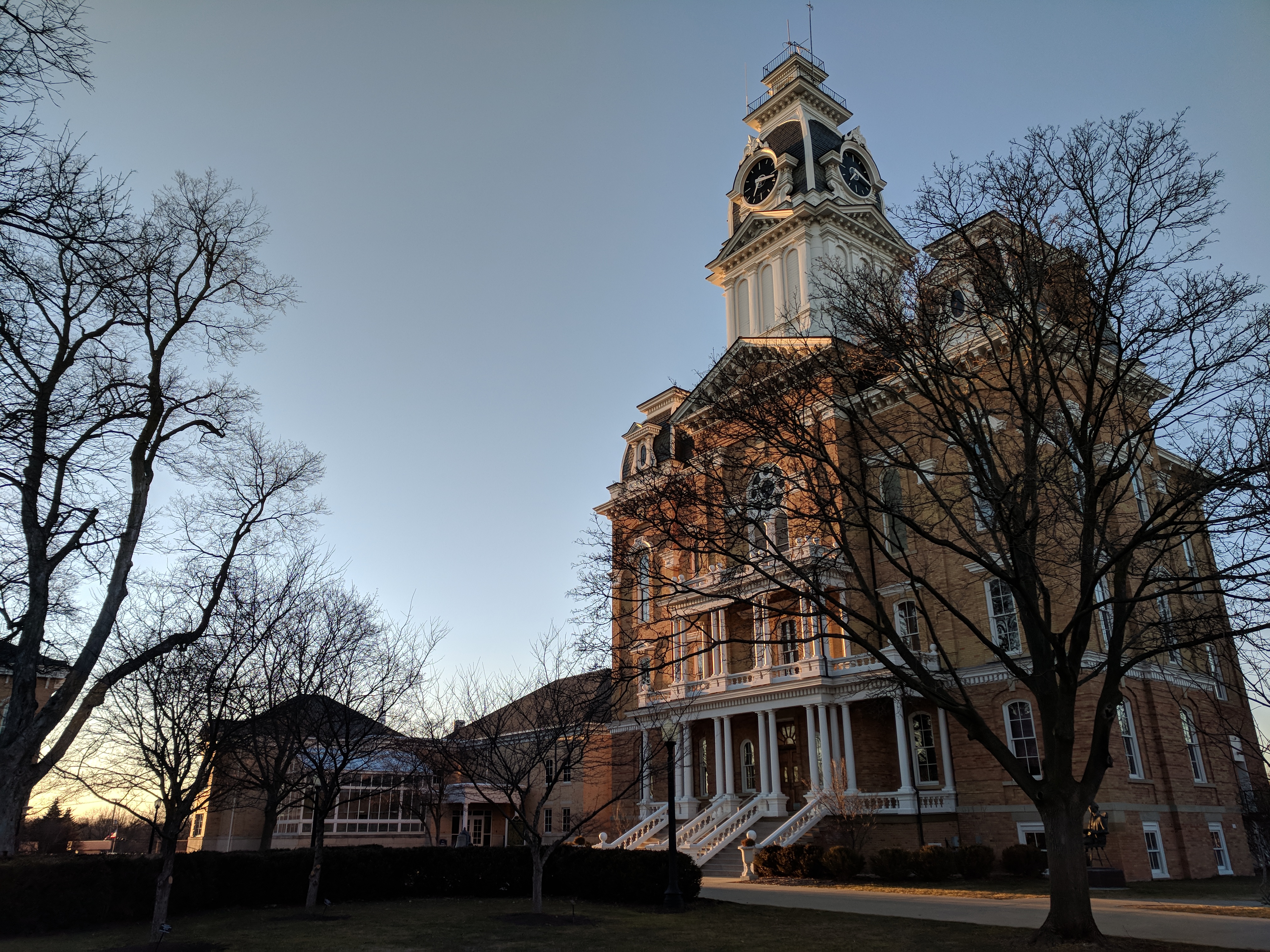
Like everyone else, I was not prepared for the COVID-19 outbreak or the grief I would feel in missing many of my last moments at Hillsdale College. Certainly in the grand scheme of life on earth, my grief over graduation and a missed month of school may be minuscule, but it is a grief made fuller by the recognition of what has been loved, and as a senior, what has been lost.
In the simplest terms, this loss has been the place of Hillsdale College — not simply place as a collection of atoms, though Hillsdale is certainly that, but rather a place in the fuller sense where spiritual and physical are somehow joined.
Four years ago, I decided to attend Hillsdale because I thought my studies would emphasize the same questions about universal truth that had already challenged me in high school, and my decision did not disappoint. The subjects studied here, like philosophy, history, and chemistry, are important precisely because they are shared by others equally invested in truth throughout human history. The pursuit of truth may be rare, but it is not exclusively ours.
Yet in another sense, if my Hillsdale experience was removed from its localized context and replaced with a comprehensive handbook on “the good life” that included every class lecture, every conversation, every prompt, and every essay, there would still be missing pieces in what had been accomplished.
Hillsdale encounters goodness, truth, and beauty in the midst of yellow brick, chalkboards, and a Margaret Thatcher statue. This intersection is not an accident, but rather a tangible implication of a greater mystery of grace.
While there are many philosophical arguments on physicalism and dualism, the Feast of the Annunciation celebrated yesterday on March 25 points Christians to the Incarnation and its implications for the world we live in.
Matter matters, not because transcendence is inadequate, but because Jesus, the Word, became flesh and dwelt among us, stooping to raise even the simplest atom to the level of glory.
Before coming to this college, I thought physical attributes were, at best, tangential to the real aim of intellectual understanding, but instead these physical realities have been the very instruments used to mold my character and build my intellect.
Hillsdale has shown me why I must value the integration of the physical and spiritual realms. But more than that, Hillsdale has been the place where those two realities have also met in my own life, and for that gift, I am eternally grateful.
For me, Hillsdale includes the sound of 18 new Western Heritage Readers hitting a desk from Professor Mark Kalthoff’s full height, the fumbled words of an ill-recited Proem from “Paradise Lost,” the click of my Pilot G2 0.5 pen that simply cannot write fast enough for Professor Matthew Gaetano’s lectures, the throb of my shin after playing one too many intramural soccer games, and the murmur of morning prayer at 8:25 a.m.
These moments matter. They have shaped me and filled me. I certainly could have learned about goodness or beauty somewhere else, at some other time, but I would not have learned them here. And as for me, I would not trade those localized, personal, and profound experiences for the world.
Hillsdale has shown me that when tears stream down my face as I read “Letter to My Children,” or when goosebumps cover my arms as the choir’s first note reverberates through Christ Chapel, I can actually understand those beautiful things beyond my physical being precisely because they are conjoined with time and space.
We read books here to learn about high things, like intellectual virtues and the life of the mind. But we also read books with worn-out pages grasped in our paper-cut fingers. In this tiny Michigan town, abstract truths are manifested in real-life people whose very existence bears testimony to a greater reality than we can see.
Hillsdale has been the place where high and lofty thoughts meet my physical — and more than physical — person. Because Hillsdale is a place, my desire to love the Lord my God with all my heart, soul, and strength has been most fulfilled in the complicated, messy, and often frustrating spaces of this college.
Matter matters because virtue does not fully exist in the abstract — you cannot become courageous simply by thinking hard enough. Virtue does not always come with academic ease or whiteboard clarity.
“Get your boots on” is not just a nice idea for wannabe intellectuals. Those words mean something in a physical reality. And sometimes, it looks like slugging through the snow in actual boots like we have done on so many winter mornings.
I know that as I move through space and time, somehow low and physical things have been given some share in the glory that is to come.
So although I do not know if I will ever sit at Baw Beese Lake watching one more sunset, I pray I remember the sound of the trees in the wind as my heart aches for the passing of time and the places that mean so much to me here. Because in those very moments, by the grace of God, the transcendent comes to us through the created world, much like the Son of God who lay in a manger.
The grief of leaving Hillsdale will come to us all sooner or later, but even in the pain, the palpable ache is a further testimony to incarnate Love. This deep ache brings to mind a line from J. R. R. Tolkein’s “Lord of the Rings.” In the words of Gandalf at the last breaking of the Fellowship, “I will not say do not weep, for not all tears are evil.”
Hadiah Ritchey is a senior studying history.

